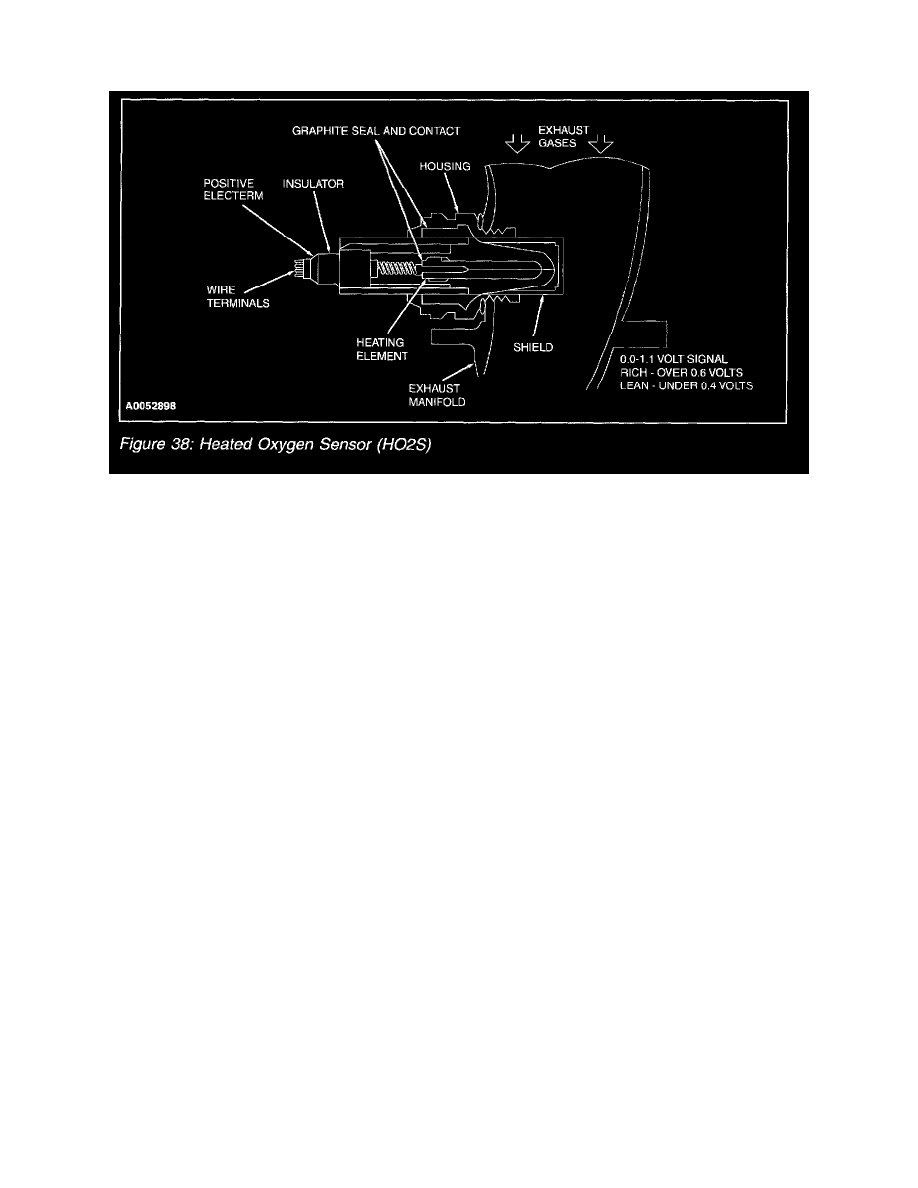E 150 V8-4.6L SOHC VIN W (2004)

Oxygen Sensor: Description and Operation
HEATED OXYGEN SENSOR
Heated Oxygen Sensor (HO2S)
The heated oxygen sensor (HO2S) (Figure 38) detects the presence of oxygen in the exhaust and produces a variable voltage according to the amount of
oxygen detected. A high concentration of oxygen (lean air/fuel ratio) in the exhaust produces a voltage signal less than 0.4 volt. A low concentration of
oxygen (rich air/fuel ratio) produces a voltage signal greater than 0.6 volt. The HO2S provides feedback to the PCM indicating air/fuel ratio in order to
achieve a near stoichiometric air/fuel ratio of 14.7:1 during closed loop engine operation. The HO2S generates a voltage between 0.0 and 1.1 volts.
Embedded with the sensing element is the HO2S heater. The heating element heats the sensor to temperatures of 800°C (1400°F). At approximately 300
°C (600°F) the engine can enter closed loop operation. The VPWR circuit supplies voltage to the heater and the PCM will turn on the heater by
providing the ground when the proper conditions occur. Since model year 1998 a high power HO2S heater and heater control system have been installed
on the Stream 1 HO2S sensors of most vehicles. The high power heater reaches closed loop fuel control temperatures faster, which allows closed loop
engine operation sooner. The use of this heater requires that the HO2S heater control be duty cycled, to prevent damage to the heater. The 6 ohm design
is not interchangeable with new style 3.3 ohm heater.
